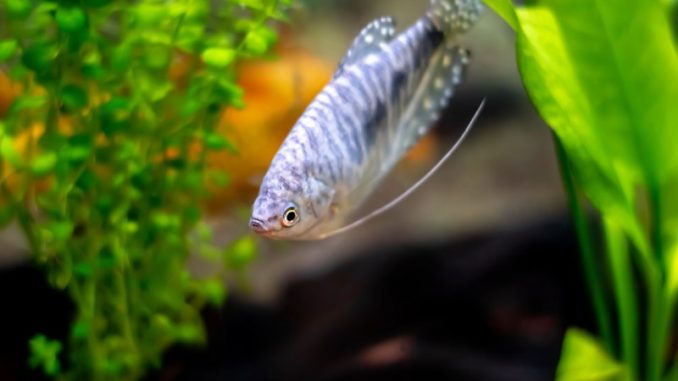
Gouramis of all kinds are extremely popular in aquariums. The blue gourami, in particular, is vibrantly colored, relatively easy to care for, and peaceful enough to thrive in a community tank.
Blue gouramis are freshwater fish and are part of the Osphronemidae family, which includes dwarf gouramis, giant gouramis, and many more varieties.
While blue gouramis can be territorial, they are mostly peaceful. Their beautiful colors and vibrant personality will enhance any tank. Blue gouramis have a lifespan of around five years, giving you plenty of time to bond with your fish.
TABLE OF CONTENTS
Blue Gourami Facts and Overview
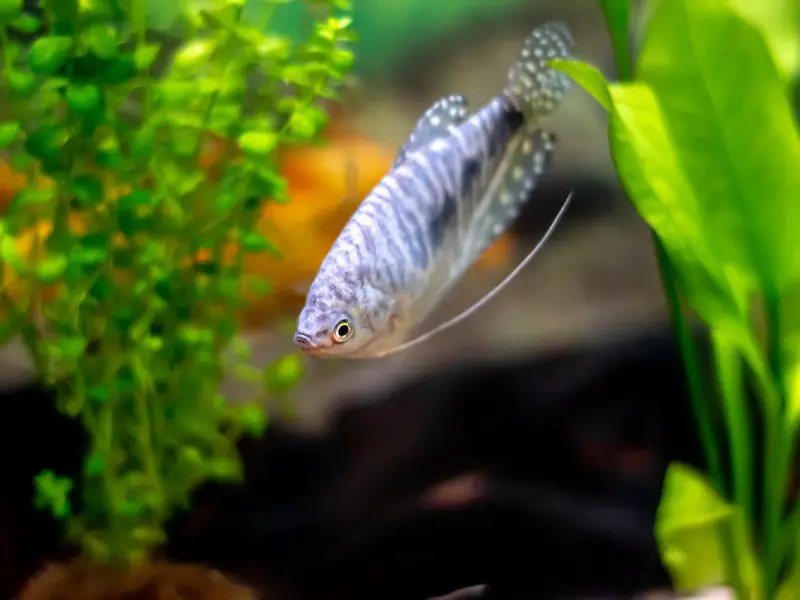
| Category | Rating |
| Care Level: | Easy |
| Temperament: | Peaceful |
| Color: | A variety of blue shades, ranging from a silvery blue to a deep, rich blue |
| Lifespan: | Approximately 5 years |
| Size: | 5-6 inches |
| Diet: | Omnivorous (most fish flakes and pellets will suit your gourami) |
| Family: | Osphronemidae |
| Minimum Tank Size: | 20 gallons |
| Tank Set-Up: | Freshwater, live plants, plenty of hiding places to explore |
| Compatibility: | Peaceful tank mates of a similar size and temperament |
Part of the fish family Osphronemidae, the blue gourami (Trichogaster trichopterus) is found in Asia, notably Pakistan, India, and Korea. In these parts of the world, gouramis are commonly found in rivers and are part of cultural cuisine in many areas.
Each variety of gourami needs a slightly different type of care. For example, the giant gourami has different needs to the dwarf gourami. Gouramis are a popular aquarium fish and can be found in many freshwater fish stores.
The cost of a gourami fish depends on its size and variety. A blue gourami fish can cost anywhere between $10 and $20.
Appearance and Behavior
Blue gouramis grow to around 5-6 inches in length. Female blue gourami fish are usually around the same size as the males, or slightly larger. Differences between males and females are subtle.
However, female blue gouramis tend to have shorter, rounded dorsal fins. Females may also look a little rounder or fuller during the breeding season.
Blue gouramis can range from a silvery blue to a rich, deeper blue hue. For example, the powder blue dwarf gourami is very popular. Blue gourami fish can have marbled patterns with bits of black, white, or even gold in their patterns. Each blue gourami is beautiful and unique.
Typical Behavior
Blue gouramis are labyrinth fish, meaning that they can breathe in oxygen from the air. Blue gouramis tend to swim in the middle or near the top of the tank, and prefer a more gentle water flow. They are slow-swimming fish, and shouldn’t be kept in a tank with fast swimming fish or nippers.
Gouramis are generally considered non-aggressive fish, but males may be aggressive towards each other. It’s best not to keep male blue gouramis together, to avoid fighting. The best tank mates for gouramis are fish of a similar size. These fish shouldn’t be brightly colored and should have a peaceful temperament.
Signs of aggression in blue gouramis include chasing, nipping, and biting. You might notice injuries on your other fish, or ragged fins, which could indicate that your gourami has been biting the fish.
Turning off the aquarium lights at night is a good way of making sure your fish get to sleep and rest at night, and also helps to prevent algae from taking over the tank.
Like betta fish, blue gouramis make bubble nests at the top of the tank to keep their eggs safe until they hatch. You can add a few floating leaves and plants (not too many) to make it easier for your gourami to build its bubble nest.
Blue Gourami Care
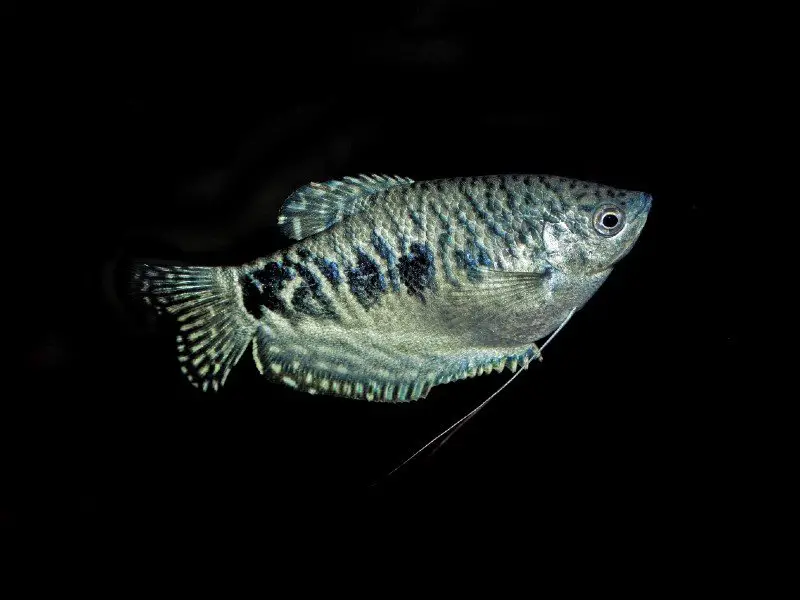
Blue gourami fish are relatively easy to care for. They are playful and hardy fish and will thrive in a well-chosen community tank.
In the wild, gouramis swim close to the surface and will imitate the same behavior in a tank. A low water flow and no more than a few floating plants will keep the surface and top half of your tank available for your blue gourami to swim around to their hearts’ content.
Gourami fish will accept flake food and pellets, but they also enjoy live food (or frozen, if you can’t get live food) as an occasional treat. Only feed your gourami as much food as they can eat in two minutes, and scoop out any leftover food.
Blue gouramis are susceptible to most freshwater fish illnesses, like ich, dropsy, and fungal infections.
Disease
Gouramis can suffer from all the usual diseases that affect freshwater fish. This can include:
Ich
Also known as “white spot disease“, ich presents itself as tiny white spots on the fish’s body and fins. It causes breathing and mobility issues and is highly contagious. If left untreated, ich will spread to other fish in the tank, and may ultimately cause death.
ich can be treated with a combination of aquarium salt, medication, and quarantining the affected fish in a separate tank.
Velvet
Velvet is another highly contagious disease that can kill your fish if not treated immediately. Symptoms include lethargy, lack of appetite/weight loss, a light brown or yellow film on the skin, skin peeling off, breathing difficulties, and your fish rubbing and scratching itself on substrate and decorations.
Velvet should be treated immediately. Consult a vet, and add medication to the tank. You may need to dim the aquarium lights or turn them off altogether.
Blue gourami fish are also prone to bacterial and fungal infections, many of which need to be treated with medication and quarantine.
If in doubt, always consult a vet before treating your fish. If you have a large community tank, it’s a good idea to have a quarantine tank prepared and ready, to prevent any diseases from spreading to your healthy fish.
Habitat and Tank Requirements
In the wild, many varieties of gourami are found in shallow water, such as rice paddies. This is where their surface-gulping behavior originated. Gouramis (like betta fish) can breathe oxygen from the air.
In the wild, gouramis often leap out of the water to catch insects for food. So, if your blue gourami is hungry, they try to jump out of its tank. This can lead to accidents, so make sure your tank has a sturdy lid.
The dark-colored substrate can make your gourami’s color pop, and more closely replicates the habitat gourami fish would choose in the wild. Plenty of decorations, including wood, plants (real or fake), and stones will give your gourami fish plenty of room to explore and hide.
Tank Conditions
A good set-up tank and proper water conditions will go a long way to keeping your blue gourami happy and healthy. These fish like warm water, ideally with temperatures between 72 and 82 degrees Fahrenheit, with a neutral pH of 7.0–8.0.
Single blue gourami will need at least 10 gallons of water, but if you plan to keep a community tank or more than one gourami, start with at least a 20-gallon tank.
Blue gouramis don’t like a strong water current, but an air stone or bubbler can be used to provide extra oxygen in the water. Gouramis prefer to stay near the top of the tank, and prefer a dark, gravelly substrate.
Like most fish, blue gouramis like places to hide and play in the tank. You can make driftwood for your aquarium to replicate a gourami’s natural habitat, and add plants.
Tank Mates
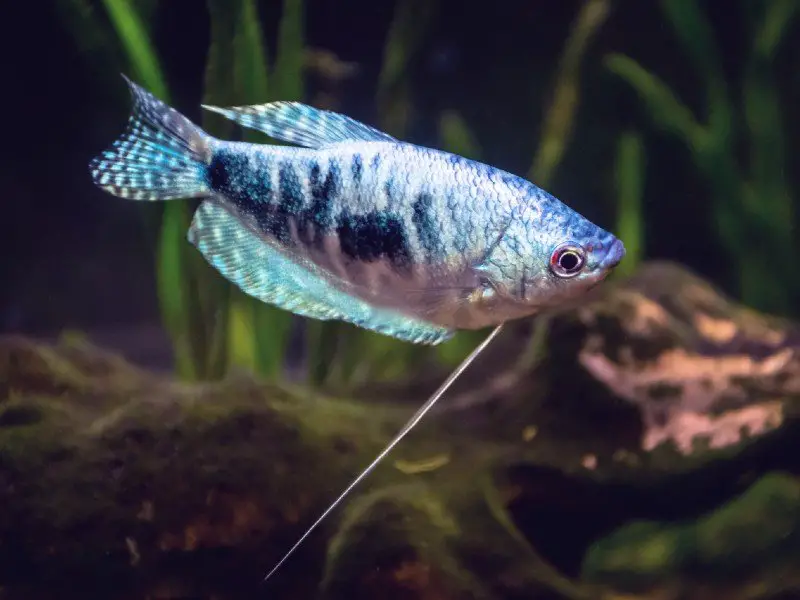
Blue gouramis are generally peaceful fish, but may still display some aggressive behavior. For example, male gouramis can be territorial towards each other. Female gouramis are more peaceful and can be paired with just about any other kind of fish, as long as they aren’t aggressive or fin-nippers.
Suitable tank mates for gouramis include:
- Catfish, for example, bumblebee catfish
- Mollies
- Platies
- Loaches
- Tetras
- Snails
Large, peaceful fish, around the size of your gourami, are likely to make good tank mates for blue gouramis.
Diet and Feeding
Blue gouramis are omnivores and thrive on a diet of regular fish pellets and flakes. In the wild, gouramis eat algae and insects. So, if possible, it’s best to supplement your gouramis’ diet with live food and algae-based pellets.
As with most fish, it’s a good idea to rotate your gourami’s diet, and occasionally throw in extra snacks, like live foods. Frozen bloodworms and brine shrimp make delicious treats for gouramis.
You can feed your gourami at any time of day you prefer, but be sure to feed your fish only as much as they can eat in two minutes, and scoop out any leftover food.
Breeding
Breeding blue gouramis is a similar process to breeding betta fighting fish. The male builds a bubble nest and deposits the eggs in the nest until they hatch. Breeding any fish can be a challenge, and gouramis are no exception.
Here’s how to prepare blue gouramis for breeding:
1. Set up a separate breeding tank
Start by setting up a breeding tank. This is the best way to make sure conditions are optimal for your breeding pair. You’ll need to remove the female after a successful courtship, so it’s best to take both the male and female out of their tanks initially.
The breeding tank should have a similar environment to the main tank, perhaps with softer water. Add a few plants or decorations to the water surface. This will make it easier for the male to build his bubble nest. In the breeding season, the female will look fuller and rounder, indicating she is ready to breed. Choose a healthy, energetic pair.
2. Introduce the male and female
Put the male into the breeding tank first. If he’s ready to breed, he’ll build a bubble nest in the tank. Then you can introduce the female.
The male will swim around to attract the female’s attention. If she’s impressed with him (and his lovingly constructed bubble nest), the mating procedure will begin. The female releases her eggs and the male stays as close as possible to fertilize the eggs as they fall.
3. Keep an eye on the courtship procedure
If you notice any signs of distress in your fish, separate them immediately. If the female gourami destroys the bubble nest, take her out of the tank immediately. You can try again with the same female, but if she destroys the bubble nest a second time, it’s best to try with a different female.
If one fish is acting aggressively to the other, or the fish show no interest in each other, separate them and try again later.
4. Once eggs are laid and safely in the bubble nest, remove the female
When the female lays her eggs, the male will scoop them up and put them into the bubble nest. From now on, the male will care for the eggs. You should remove the female after a successful breeding, as the male can become aggressive towards her.
5. Let the male care for the eggs
It takes about three days for the gourami eggs to hatch. Until then, the male will care for the young. Once they hatch, you can remove the male. This is important, as he might see the newly-hatched fry as a tasty snack, rather than his children.
Gourami fry can be fed on powdered fry food.
Breeding blue gouramis is not an exact science. For a beginner, there may be challenges and setbacks. Do plenty of research on breeding gouramis before you begin, and choose your breeding pair wisely.
Should You Get a Blue Gourami For Your Aquarium?
If you have a busy tank, full of fast-swimming, fin-nipping fish, then no, you shouldn’t get blue gourami. However, gouramis are peaceful, beautiful fish, and are reasonably easy to care for. This makes gouramis suitable for most aquariums.
With their versatility and largely peaceful nature, gouramis are a popular choice among aquarium keepers, even beginners.
Gouramis have moderate tank setup and water quality requirements, and their labyrinth organs make them harder than some other fish. The gourami diet is easy — they eat almost anything. While some gouramis can be aggressive, they are mostly peaceful towards fish of their own size.
If you think your tank would be enhanced by a flash of vibrant blue, blue gourami could be the perfect fish for you.

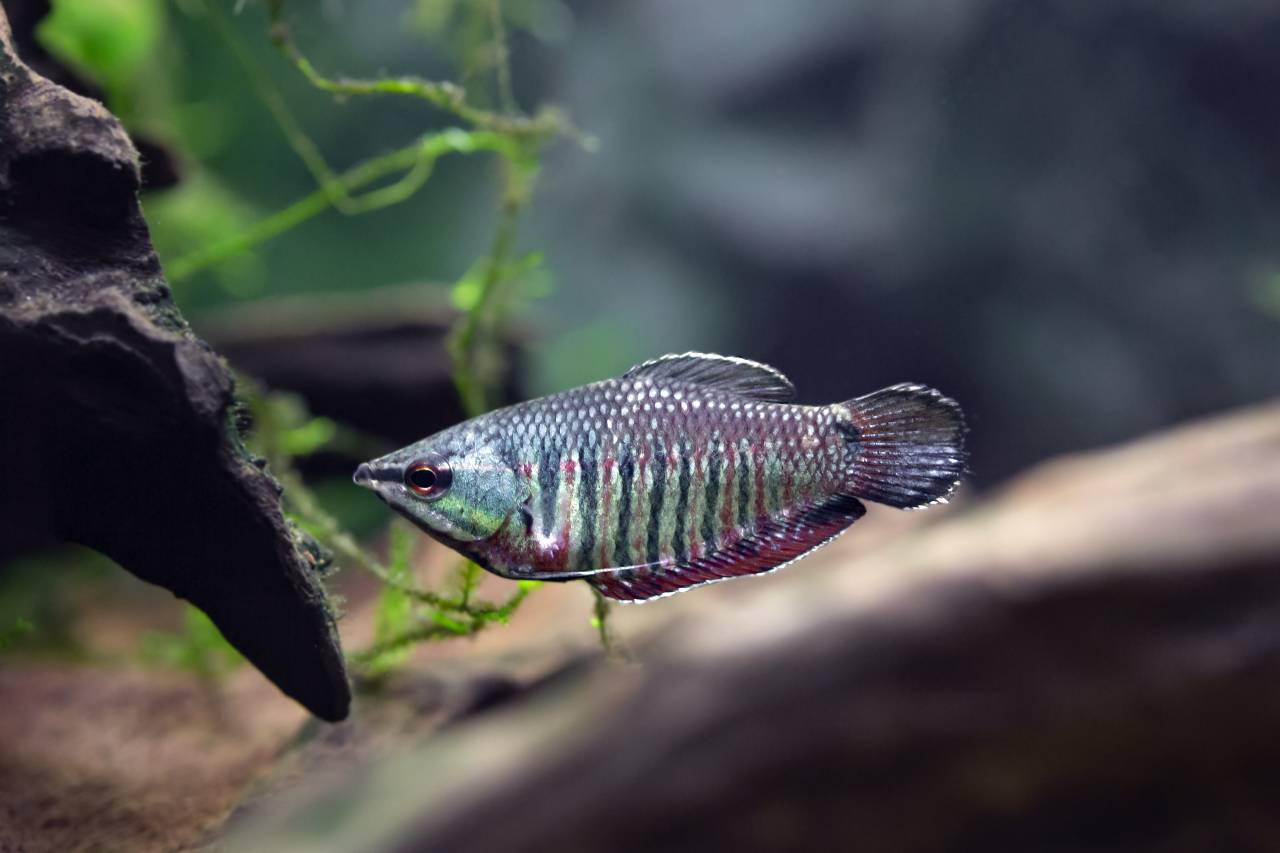
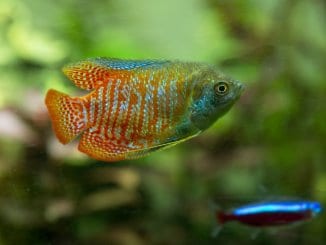
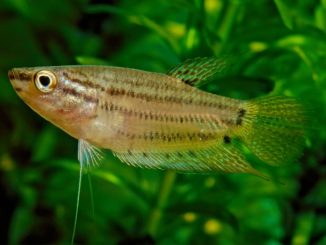
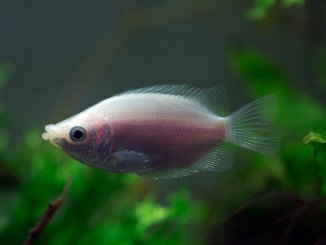
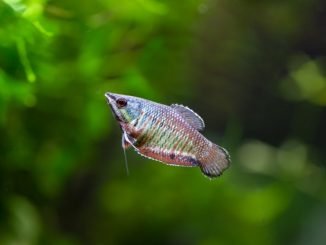
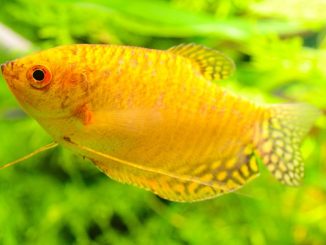
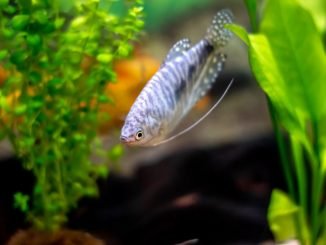
Be the first to comment